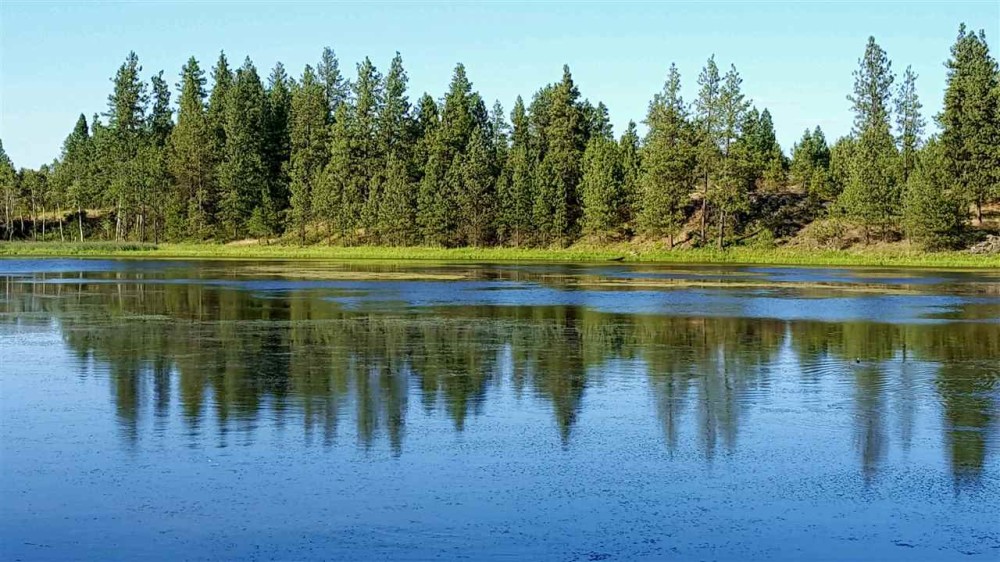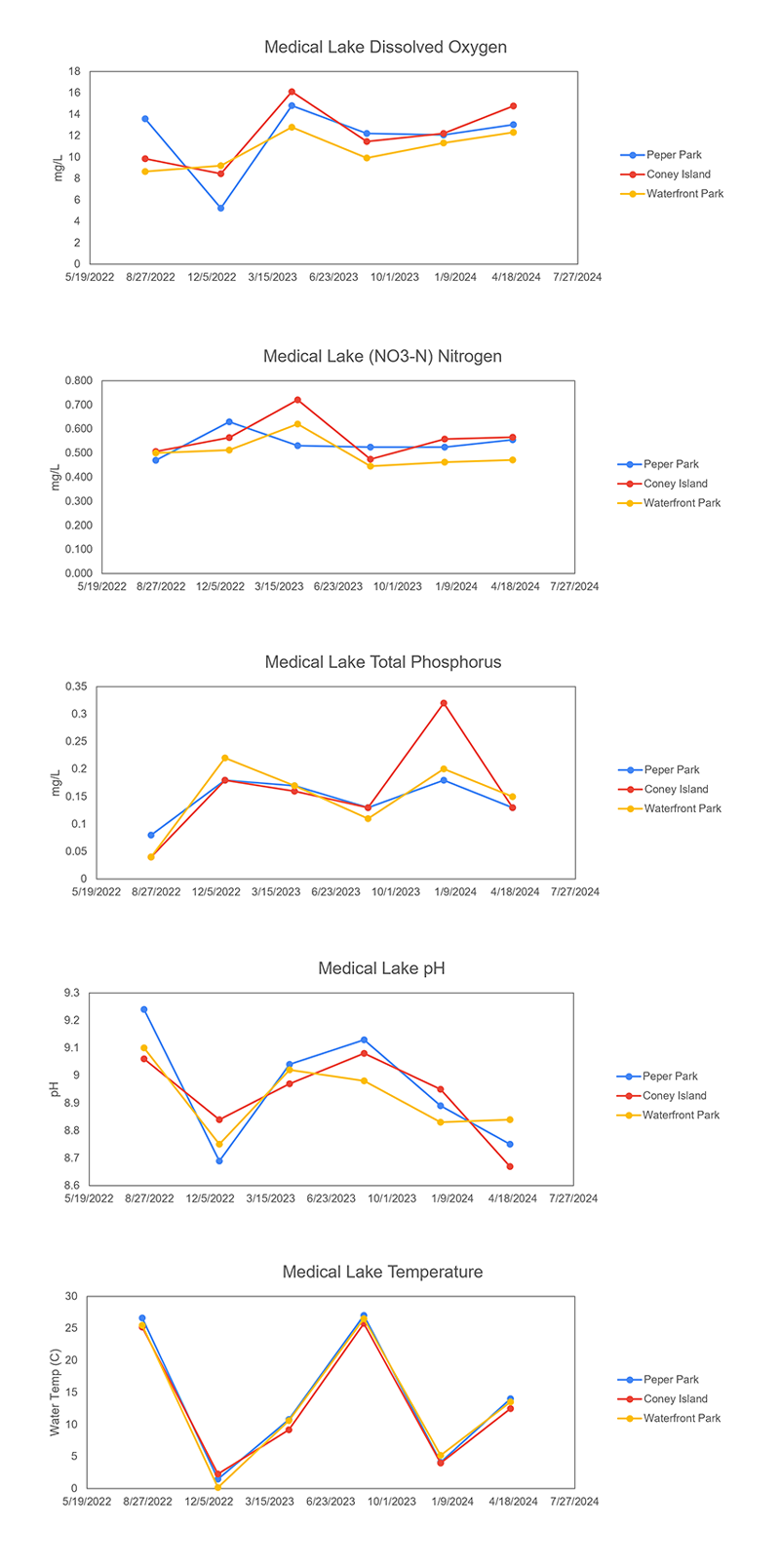Discover Amazing Local Geology & Help Scientists Study Medical Lake’s Water
Posted on August 6, 2024 at 6:00 am

Guest post by Dr. Chad Pritchard
The geology of Medical Lake is amazing. Medical Lake sits right on the boundary where supercontinent Nuna (two supercontinents before Pangaea) ripped apart some 1 billion years ago.
The Geosciences Department at Eastern Washington University (EWU) has recently done uranium-lead (U/Pb) dating analyses to calculate the age of the Medical Lake granite, the hills to the west and east of the city. The basalt cliffs are made up of the 16.3-million-year-old Columbia River Basalt Group and the Ice Age megafloods that scoured the land forming Medical and West Medical Lakes.
Additionally, fractures can be seen in the basalt using aerial images—part of the Cheney fracture zone. Current research is trying to address how the fractures and Medical Lake itself influence the delicate hydrosphere and aquifers of the West Plains.
The history of Medical Lake is also fascinating from the early founders to the establishment of Eastern State Hospital. The evolution of restoring the lake from a nearly eutrophic (almost dead) lake has been a remarkable story, with Steve Cooper playing a part of the entire process over his long career with the city of Medical Lake.
You are invited to walk along the Medical Lake trail with me and Steve Cooper (director of Medical Lake Wastewater Plant) as we chat about the natural science and history of the beautiful lake. As a walker, you’ll also assist us in gathering samples of the lake as part of an ongoing research project that uses citizen science to do more collectively than any one scientist can.
Medical Lake Geo-Walk & Water Sampling
For adults, teens & tweens
WATERFRONT PARK
S Lefevre St/Hwy 902 (Medical Lake)
Wednesday, August 21, 5–7pm

We have been conducting this walk since the fall of 2022. Samples are analyzed for nitrogen and phosphorus at the city’s laboratory (see the charts showing the analyzed amounts). Samples are also taken for per- and polyfluoroalkyl substances (PFAS), also known as forever chemicals, as part of a larger study of the West Plains.
The city also samples the lake as part of their SolarBee Circulator array—5 solar-powered water circulators that mix the upper part of the lake year-round. The waters of Medical Lake have been clean in previous samples, and we are continuing to build a data set to help make informed decisions in collaboration with the city.
Walking around the lake with new friends is a pleasure in itself, but it is much more meaningful when you are also making a difference. So, bring your own garbage picker-uppers, and we’ll make sure to have a few extra bags and grabbers (in case anyone forgets) so that we can all pick up trash along the way. Luckily, there is not usually too much trash, but there seems to be an uptick of garbage during fishing season.
If you have never been to Medical Lake, or maybe it has been a while, Waterfront Park is a gem of the Evergreen State. We meet at Waterfront Park and walk around the 3-mile loop trail—much of it is a beautiful, treed section of the park. Many folks leave after the last sample is taken at Coney Island Park to grab a cup of coffee or go antique shopping in downtown Medical Lake. The geo-walk is about enjoying the lake, meeting new friends, and getting to know the wonders of the area we live in. If you aren’t able to be there for the whole adventure, I encourage you to join us for what you can.

Dr. Chad Pritchard is a professor of geology at EWU, principal investigator for the West Plains PFAS Fate & Transport Study (EWU, city of Medical Lake, and Washington State Department of Ecology), and co-author of the book Washington Rocks! A Guide to Geologic Sites in the Evergreen State. Dr. Pritchard research focuses on the West Plains and includes uranium-lead age determination of the isolated buttes, the region’s paleochannels, and the influences of geology on the hydrogeologic cycle in eastern Washington.
Tags: adults, citizen scientist, ecology, environmental, geo-walk, geology, teens, tweens, walks
